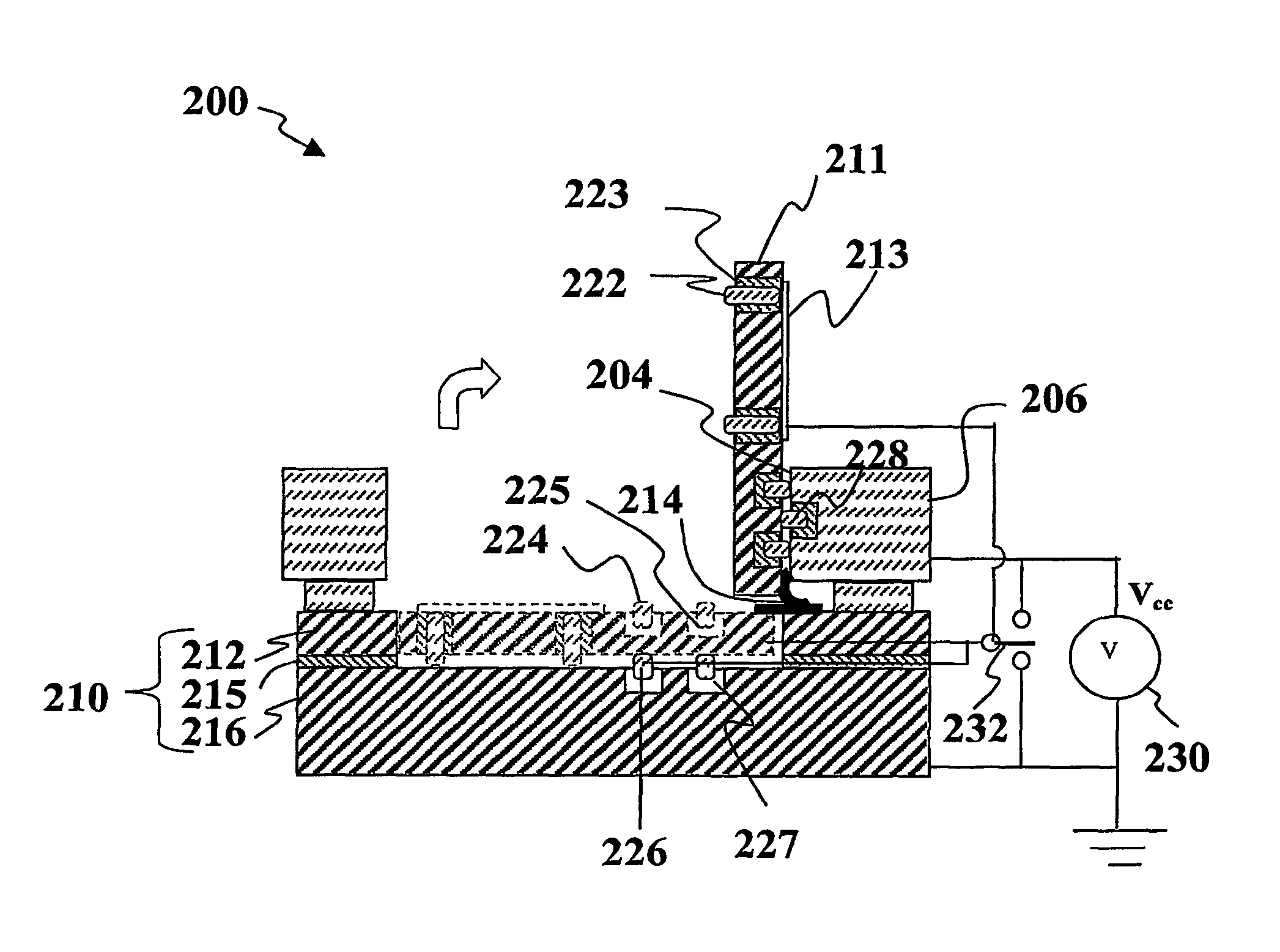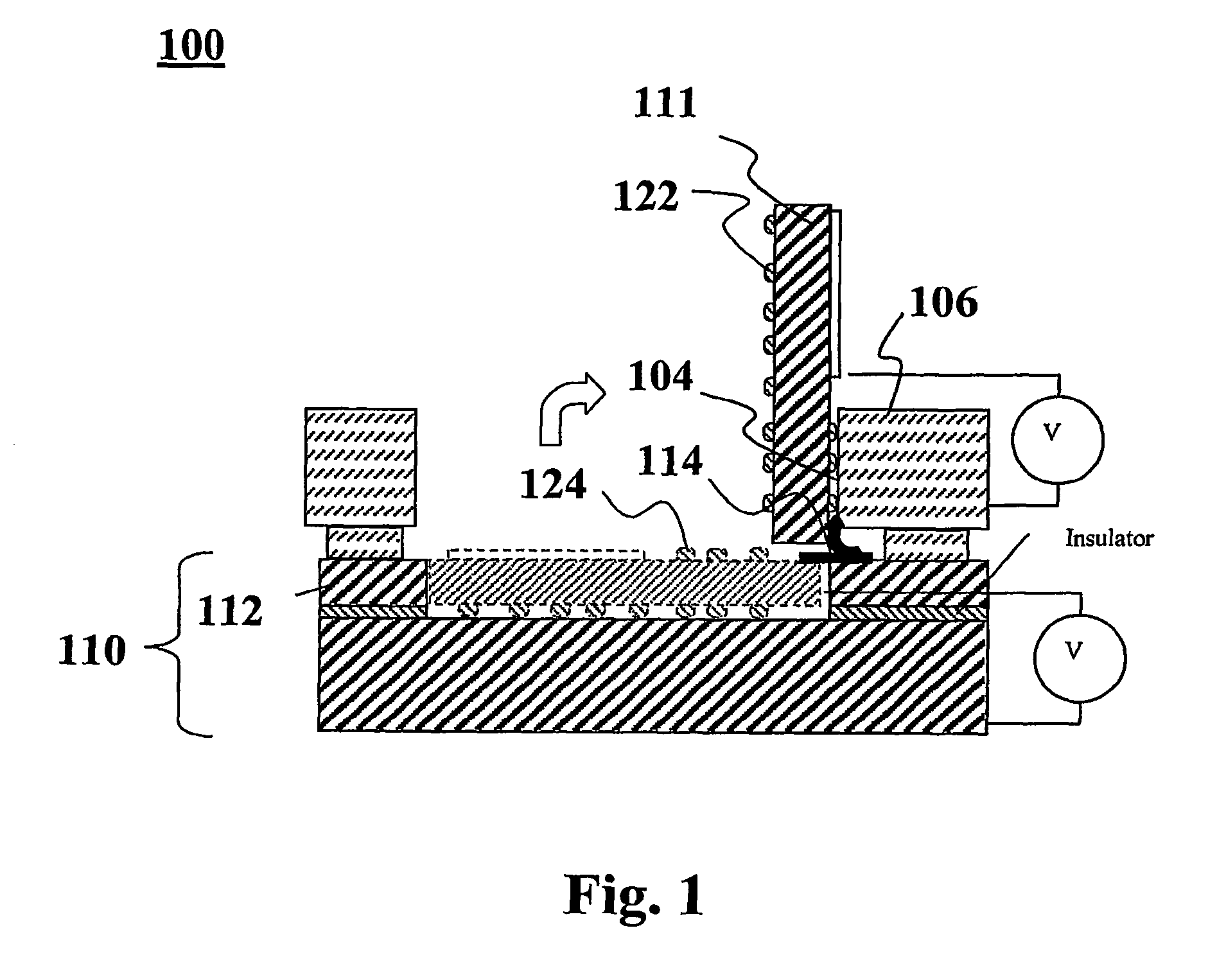Optical cross-connect system
a cross-connect switch and optical technology, applied in the field of optical communication, can solve the problems of physical damage to the landing pad, loss of clamping voltage, loss of switch state,
- Summary
- Abstract
- Description
- Claims
- Application Information
AI Technical Summary
Benefits of technology
Problems solved by technology
Method used
Image
Examples
first embodiment
[0168]FIG. 17A depicts an exploded isometric diagram of a MEMS device 1700 according to the present invention. An assembly diagram of the device 1700 is depicted in FIG. 17B. The device 1700 may be used, for example, as an optical switch, as shown in FIG. 17B. The device 1700 may selectively couple optical signals 1701 between a first set of optical input / output (I / O) ports 1752 and a second set of I / O ports 1754 as shown in FIG. 17B. The I / O ports 1752, 1754 may be collimator lenses, such as graded refractive index (GRIN) lenses that couple the optical signals 1701 to and from optical fibers (not shown). To facilitate optical coupling to the I / O ports 1752, 1754, the device 1700 may include collimator arrays 1756 that are disposed along the perimeter of the device 1700. The device 1700 generally includes a substrate 1710, MEMS device dies 1720A, 1720B, 1720C, 1720D, and a common clamping die 1730. Each MEMS device die 1720A, 1720B, 1720C, 1720D may have an array of MEMS optical ele...
second embodiment
[0178]MEMS devices of the type shown in FIGS. 17A–17B may be manufactured according to an inventive method 1800 according to the invention. The steps of the method 1800 are illustrated in the flow diagram of FIG. 18. For the purposes of example, the steps of the method 1800 are described below with respect to the device 1700 of FIGS. 17A–17B. The method begins with the fabrication of MEMS device dies 1720A, 1720B, 1720C, 1720D by standard semiconductor processes. At an optional step 1802, the device dies may be tested prior to further assembly to ensure proper operation.
[0179]At step 1804, the device dies are attached to the substrate 1710. By way of example, the device dies 1720A, 1720B, 1720C, 1720D may be attached with a solder attachment process. For example, the metallized bonding pads 1716, 1726 react with a solder to form strong self-aligned bonds. The bonding pads 1716 on the substrate 1710 are preferably defined with the highest resolution processes available (e.g., thin fi...
PUM
 Login to View More
Login to View More Abstract
Description
Claims
Application Information
 Login to View More
Login to View More - R&D
- Intellectual Property
- Life Sciences
- Materials
- Tech Scout
- Unparalleled Data Quality
- Higher Quality Content
- 60% Fewer Hallucinations
Browse by: Latest US Patents, China's latest patents, Technical Efficacy Thesaurus, Application Domain, Technology Topic, Popular Technical Reports.
© 2025 PatSnap. All rights reserved.Legal|Privacy policy|Modern Slavery Act Transparency Statement|Sitemap|About US| Contact US: help@patsnap.com



